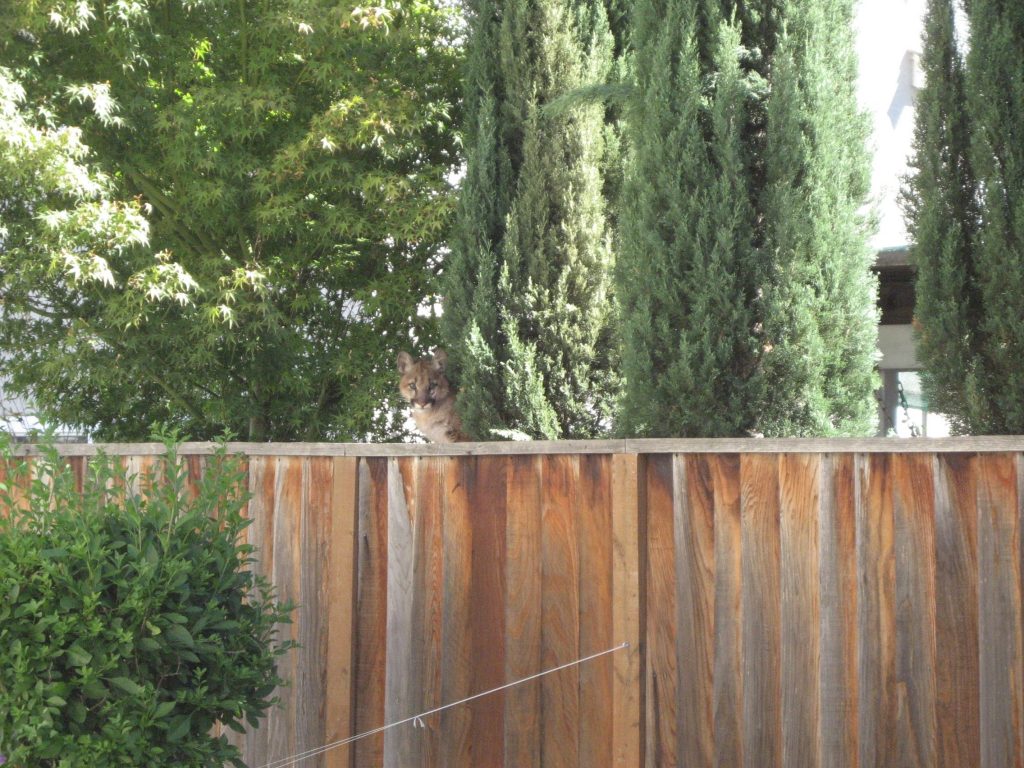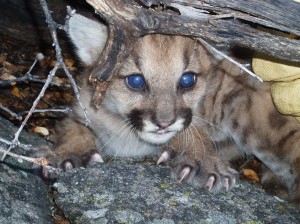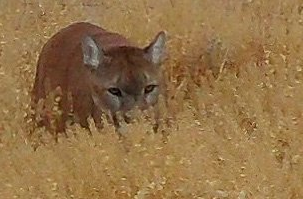Cougars are built for short-term speed, agility and strength. Their skeletal structure is held together by muscle more than ligaments, which makes them incredibly flexible.
Much of the big cat’s strength is found in their powerful rear legs, which can propel them five metres straight up from a standstill and 14 metres horizontally onto the back of their prey.
To view an example of a cougar effortless jumping, watch this short trail camera clip. Note how the cougar bypasses the lower part of the fence to easily bound over as two metre high section.



